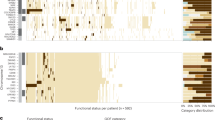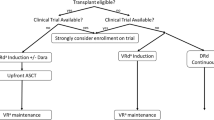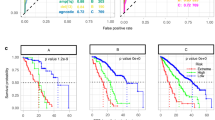Abstract
Multiple myeloma (MM) remains a difficult-to-treat disease even with the latest therapeutic advances due to the complex, overlapping, and heterogeneous cytogenetic, genetic, and molecular abnormalities. To address this challenging problem, we previously identified the universal and critical roles of RSK2 and AKT, the effector signaling molecules downstream of PDPK1, regardless of cytogenetic and genetic profiles. Based on this, in this study, we investigated the anti-myeloma potency of TAS0612, a triple inhibitor against RSK, including RSK2, AKT, and S6K. Treatment with TAS0612 exerted the anti-proliferative effect via cell cycle blockade and the induction of apoptosis in human myeloma-derived cell lines (HMCLs) with diverse cytogenetic and genetic profiles. Ex vivo treatment with TAS0612 also significantly reduced the viability of patient-derived primary myeloma cells with diverse cytogenetic profiles. TAS0612 simultaneously caused the upregulation of several tumor suppressor genes, modulated prognostic genes according to the MMRF CoMMpass data, and downregulated a series of Myc- and mTOR-related genes. Moreover, the combination of TAS0612 with venetoclax (VEN) showed the synergy in inducing apoptosis in HMCLs irrespective of the t(11;14) translocation status. TAS0612 alone and combined with VEN are new potent candidate therapeutic strategies for MM, regardless of cytogenetic/genetic profiles, facilitating its future clinical development.
This is a preview of subscription content, access via your institution
Access options
Subscribe to this journal
Receive 12 print issues and online access
$259.00 per year
only $21.58 per issue
Buy this article
- Purchase on SpringerLink
- Instant access to full article PDF
Prices may be subject to local taxes which are calculated during checkout






Similar content being viewed by others
Data availability
Data supporting the findings of this study are available from the corresponding author upon reasonable request.
Notes
human myeloma cell lines,
3-(4,5-di-methylthiazol-2-yl)-2,5-diphenyltetrazolium bromide, yellow tetrazole
Annexin-V
propidium iodide
control
β-actin
standard deviation
Multiple Myeloma Research Foundation
false discovery rate
normal enrichment score
venetoclax
standard error
References
Zanwar S, Nandakumar B, Kumar S. Immune-based therapies in the management of multiple myeloma. Blood Cancer J. 2020;10:84.
Rasche L, Wäsch R, Munder M, Goldschmidt H, Raab MS. Novel immunotherapies in multiple myeloma—chances and challenges. Haematologica. 2021;106:2555–65.
Van Oekelen O, Nath K, Mouhieddine TH, Farzana T, Aleman A, Melnekoff DT, et al. Interventions and outcomes of patients with multiple myeloma receiving salvage therapy after BCMA-directed CAR T therapy. Blood. 2023;141:756–65.
Swan D, Routledge D, Harrison S. The evolving status of immunotherapies in multiple myeloma: the future role of bispecific antibodies. Br J Haematol. 2022;196:488–506.
Schürch CM, Rasche L, Frauenfeld L, Weinhold N, Fend F. A review on tumor heterogeneity and evolution in multiple myeloma: pathological, radiological, molecular genetics, and clinical integration. Virchows Arch Int J Pathol. 2020;476:337–51.
Cowan AJ, Green DJ, Kwok M, Lee S, Coffey DG, Holmberg LA, et al. Diagnosis and management of multiple myeloma: a review. JAMA. 2022;327:464–77.
Brioli A, Melchor L, Cavo M, Morgan GJ. The impact of intra-clonal heterogeneity on the treatment of multiple myeloma. Br J Haematol. 2014;165:441–54.
Hervé AL, Florence M, Philippe M, Michel A, Thierry F, Kenneth A, et al. Molecular heterogeneity of multiple myeloma: pathogenesis, prognosis, and therapeutic implications. J Clin Oncol J Am Soc Clin Oncol. 2011;29:1893–7.
Rasche L, Chavan SS, Stephens OW, Patel PH, Tytarenko R, Ashby C, et al. Spatial genomic heterogeneity in multiple myeloma revealed by multi-region sequencing. Nat Commun. 2017;8:268.
Maura F, Rajanna AR, Ziccheddu B, Poos AM, Derkach A, Maclachlan K, et al. Genomic classification and individualized prognosis in multiple myeloma. J Clin Oncol J Am Soc Clin Oncol. 2024;42:1229–40.
Hideshima T, Anderson KC. Signaling pathway mediating myeloma cell growth and survival. Cancers. 2021;13:216.
John L, Krauth MT, Podar K, Raab MS. Pathway-directed therapy in multiple myeloma. Cancers. 2021;13:1668.
Kuehl WM, Bergsagel PL. Molecular pathogenesis of multiple myeloma and its premalignant precursor. J Clin Invest. 2012;122:3456–63.
Hu J, Hu WX. Targeting signaling pathways in multiple myeloma: Pathogenesis and implication for treatments. Cancer Lett. 2018;414:214–21.
Perroud C, Thurian D, Andres M, Künzi A, Wiedemann G, Zeerleder S, et al. Effect of MAPK activation via mutations in NRAS, KRAS and BRAF on clinical outcome in newly diagnosed multiple myeloma. Hematol Oncol. 2023;41:912–21.
Shaffer AL, Emre NCT, Lamy L, Ngo VN, Wright G, Xiao W, et al. IRF4 addiction in multiple myeloma. Nature. 2008;454:226–31.
Matthews GM, de Matos Simoes R, Dhimolea E, Sheffer M, Gandolfi S, Dashevsky O, et al. NF-κB dysregulation in multiple myeloma. Semin Cancer Biol. 2016;39:68–76.
Xu J, Pfarr N, Endris V, Mai EK, Md Hanafiah NH, Lehners N, et al. Molecular signaling in multiple myeloma: association of RAS/RAF mutations and MEK/ERK pathway activation. Oncogenesis. 2017;6:e337.
Zöllinger A, Stühmer T, Chatterjee M, Gattenlöhner S, Haralambieva E, Müller-Hermelink HK, et al. Combined functional and molecular analysis of tumor cell signaling defines 2 distinct myeloma subgroups: Akt-dependent and Akt-independent multiple myeloma. Blood. 2008;112:3403–11.
Chavan SS, He J, Tytarenko R, Deshpande S, Patel P, Bailey M, et al. Bi-allelic inactivation is more prevalent at relapse in multiple myeloma, identifying RB1 as an independent prognostic marker. Blood Cancer J. 2017;7:e535.
Gagliardi PA, Puliafito A, Primo L. PDK1: at the crossroad of cancer signaling pathways. Semin Cancer Biol. 2018;48:27–35.
Zheng N, Wei J, Wu D, Xu Y, Guo J. Master kinase PDK1 in tumorigenesis. Biochim Biophys Acta Rev Cancer. 2023;1878:188971.
Cho YY. RSK2 and its binding partners in cell proliferation, transformation and cancer development. Arch Pharm Res. 2017;40:291–303.
Cho YY. Molecular targeting of ERKs/RSK2 signaling in cancers. Curr Pharm Des. 2017;23:4247–58.
Shimura Y, Kuroda J, Ri M, Nagoshi H, Yamamoto-Sugitani M, Kobayashi T, et al. RSK2(Ser227) at N-terminal kinase domain is a potential therapeutic target for multiple myeloma. Mol Cancer Ther. 2012;11:2600–9.
Chinen Y, Kuroda J, Shimura Y, Nagoshi H, Kiyota M, Yamamoto-Sugitani M, et al. Phosphoinositide protein kinase PDPK1 is a crucial cell signaling mediator in multiple myeloma. Cancer Res. 2014;74:7418–29.
Isa R, Horinaka M, Tsukamoto T, Mizuhara K, Fujibayashi Y, Taminishi-Katsuragawa Y, et al. The rationale for the dual-targeting therapy for RSK2 and AKT in multiple myeloma. Int J Mol Sci. 2022;23:2919.
Shibata T, Watari K, Kawahara A, Sudo T, Hattori S, Murakami Y, et al. Targeting phosphorylation of Y-box-binding protein YBX1 by TAS0612 and everolimus in overcoming antiestrogen resistance. Mol Cancer Ther. 2020;19:882–94.
Katsuragawa-Taminishi Y, Mizutani S, Kawaji-Kanayama Y, Onishi A, Okamoto H, Isa R, et al. Triple targeting of RSK, AKT, and S6K as pivotal downstream effectors of PDPK1 by TAS0612 in B-cell lymphomas. Cancer Sci. 2023;114:4691–705.
Ichikawa K, Ito S, Kato E, Abe N, Machida T, Iwasaki J, et al. TAS0612, a novel RSK, AKT, and S6K inhibitor, exhibits antitumor effects in preclinical tumor models. Mol Cancer Ther. 2023;23:174–86.
Matsumura-Kimoto Y, Tsukamoto T, Shimura Y, Chinen Y, Tanba K, Kuwahara-Ota S, et al. Serine-227 in the N-terminal kinase domain of RSK2 is a potential therapeutic target for mantle cell lymphoma. Cancer Med. 2020;9:5185–99.
Ianevski A, Giri AK, Aittokallio T. SynergyFinder 3.0: an interactive analysis and consensus interpretation of multi-drug synergies across multiple samples. Nucleic Acids Res. 2022;50:W739–43.
Mootha VK, Lindgren CM, Eriksson KF, Subramanian A, Sihag S, Lehar J, et al. PGC-1alpha-responsive genes involved in oxidative phosphorylation are coordinately downregulated in human diabetes. Nat Genet. 2003;34:267–73.
Subramanian A, Tamayo P, Mootha VK, Mukherjee S, Ebert BL, Gillette MA, et al. Gene set enrichment analysis: a knowledge-based approach for interpreting genome-wide expression profiles. Proc Natl Acad Sci USA. 2005;102:15545–50.
Goldman MJ, Craft B, Hastie M, Repečka K, McDade F, Kamath A, et al. Visualizing and interpreting cancer genomics data via the Xena platform. Nat Biotechnol. 2020;38:675–8.
Guo C, Chénard-Poirier M, Roda D, de Miguel M, Harris SJ, Candilejo IM, et al. Intermittent schedules of the oral RAF-MEK inhibitor CH5126766/VS-6766 in patients with RAS/RAF-mutant solid tumours and multiple myeloma: a single-centre, open-label, phase 1 dose-escalation and basket dose-expansion study. Lancet Oncol. 2020;21:1478–88.
Subbiah V, Kreitman RJ, Wainberg ZA, Gazzah A, Lassen U, Stein A, et al. Dabrafenib plus trametinib in BRAFV600E-mutated rare cancers: the phase 2 ROAR trial. Nat Med. 2023;29:1103–12.
Heuck CJ, Jethava Y, Khan R, van Rhee F, Zangari M, Chavan S, et al. Inhibiting MEK in MAPK pathway-activated myeloma. Leukemia. 2016;30:976–80.
Tatekawa S, Chinen Y, Ri M, Narita T, Shimura Y, Matsumura-Kimoto Y, et al. Epigenetic repression of miR-375 is the dominant mechanism for constitutive activation of the PDPK1/RPS6KA3 signalling axis in multiple myeloma. Br J Haematol. 2017;178:534–46.
Turke AB, Song Y, Costa C, Cook R, Arteaga CL, Asara JM, et al. MEK inhibition leads to PI3K/AKT activation by relieving a negative feedback on ERBB receptors. Cancer Res. 2012;72:3228–37.
Okamura S, Arakawa H, Tanaka T, Nakanishi H, Ng CC, Taya Y, et al. p53DINP1, a p53-inducible gene, regulates p53-dependent apoptosis. Mol Cell. 2001;8:85–94.
Gao J, Zhao C, Liu Q, Hou X, Li S, Xing X, et al. Cyclin G2 suppresses Wnt/β-catenin signaling and inhibits gastric cancer cell growth and migration through Dapper1. J Exp Clin Cancer Res CR. 2018;37:317.
Kelley KD, Miller KR, Todd A, Kelley AR, Tuttle R, Berberich SJ. YPEL3, a p53-regulated gene that induces cellular senescence. Cancer Res. 2010;70:3566–75.
Holien T, Våtsveen TK, Hella H, Waage A, Sundan A. Addiction to c-MYC in multiple myeloma. Blood. 2012;120:2450–3.
Misund K, Keane N, Stein CK, Asmann YW, Day G, Welsh S, et al. MYC dysregulation in the progression of multiple myeloma. Leukemia. 2020;34:322–6.
Warren CFA, Wong-Brown MW, Bowden NA. BCL-2 family isoforms in apoptosis and cancer. Cell Death Dis. 2019;10:177.
Touzeau C, Dousset C, Le Gouill S, Sampath D, Leverson JD, Souers AJ, et al. The Bcl-2 specific BH3 mimetic ABT-199: a promising targeted therapy for t(11;14) multiple myeloma. Leukemia. 2014;28:210–2.
Sidiqi MH, Al Saleh AS, Kumar SK, Leung N, Jevremovic D, Muchtar E, et al. Venetoclax for the treatment of multiple myeloma: Outcomes outside of clinical trials. Am J Hematol. 2021;96:1131–6.
Kuroda J, Puthalakath H, Cragg MS, Kelly PN, Bouillet P, Huang DCS, et al. Bim and Bad mediate imatinib-induced killing of Bcr/Abl+ leukemic cells, and resistance due to their loss is overcome by a BH3 mimetic. Proc Natl Acad Sci USA. 2006;103:14907–12.
Haschka MD, Soratroi C, Kirschnek S, Häcker G, Hilbe R, Geley S, et al. The NOXA-MCL1-BIM axis defines lifespan on extended mitotic arrest. Nat Commun. 2015;6:6891.
Mazumder S, Choudhary GS, Al-Harbi S, Almasan A. Mcl-1 Phosphorylation defines ABT-737 resistance that can be overcome by increased NOXA expression in leukemic B cells. Cancer Res. 2012;72:3069–79.
Anjum R, Blenis J. The RSK family of kinases: emerging roles in cellular signalling. Nat Rev Mol Cell Biol. 2008;9:747–58.
Acknowledgements
This work was partly supported by Taiho Pharmaceutical, the Japan Agency for Medical Research and Development (JP19ck0106516h0001, 24ck0106943h0001), JSPS KAKENHI Grant Number 22K08512, the Japanese Society of Hematology Research Grant, the Japan Leukemia Research Fund Award (JK), the Japanese Society for Myeloma Research Award, and a grant-in-aid from the Public Promoting Association Asano Foundation for Studies on Medicine (SM). The authors greatly thank all the participating patients and their families. We thank Ms. Mizushima K and Sakamoto-Inada N for their excellent technical support.
Author information
Authors and Affiliations
Contributions
H.O. and K.I. performed experiments, analyzed the data, and drafted the manuscript. S.M. assisted and supervised the experiments. Y.K-T., Y.K-K., K.M., A.M., R.I., T.F., T.T., and Y.S. supported experiments and analyzed the data. M.T. K.I. and J.K. designed and supervised the research and drafted the manuscript.
Corresponding author
Ethics declarations
Competing interests
This work is partly supported by Taiho Pharmaceutical Co., Ltd. J.K. is a consultant for Janssen Pharmaceutical, Abbvie, Pfizer, BeiGene, and Bristol-Myers Squibb (BMS), has received research funding from Kyowa Kirin, Chugai Pharmaceutical, Japan Blood Product Organization, Sumitomo Pharmaceutical, Otsuka Pharmaceutical, Asahikasei, and Mochida Pharmaceutical and has received honoraria from Janssen Pharmaceutical, Kyowa Kirin, Chugai Pharmaceutical, Ono Pharmaceutical, Sanofi, BMS, Novartis, Abbvie, Pfizer, and Astellas Pharmaceutical. S.M. has received honoraria from Sanofi and Ono Pharmaceutical. T.T. has received honoraria from BMS, Janssen Pharmaceutical, Sanofi, Kyowa Kirin, and Chugai Pharmaceutical. T.F. has received honoraria from Takeda Pharmaceutical. Y.S. has received honoraria from Ono Pharmaceutical, BMS, Janssen Pharmaceutical, Sanofi, Kyowa Kirin, Takeda Pharmaceutical, and Chugai Pharmaceutical. K.I. is an employee of Taiho Pharmaceutical.
Ethics approval and consent to participate
All methods were performed in accordance with the relevant guidelines and regulations. This study was conducted in accordance with the principles of the Declaration of Helsinki and was approved by the institutional review board of Kyoto Prefectural University of Medicine (RBMR-G-124-15). Written informed consent was obtained from all patients for the use of their BM cells. All animal care and treatments were approved by the Institutional Animal Care and Use Committee of Taiho Pharmaceutical Co., Ltd., and all procedures for animal experiments were performed according to the company’s guidelines.
Additional information
Publisher’s note Springer Nature remains neutral with regard to jurisdictional claims in published maps and institutional affiliations.
Rights and permissions
Springer Nature or its licensor (e.g. a society or other partner) holds exclusive rights to this article under a publishing agreement with the author(s) or other rightsholder(s); author self-archiving of the accepted manuscript version of this article is solely governed by the terms of such publishing agreement and applicable law.
About this article
Cite this article
Okamoto, H., Mizutani, S., Tsukamoto, T. et al. Robust anti-myeloma effect of TAS0612, an RSK/AKT/S6K inhibitor, with venetoclax regardless of cytogenetic abnormalities. Leukemia 39, 211–221 (2025). https://doi.org/10.1038/s41375-024-02439-9
Received:
Revised:
Accepted:
Published:
Issue date:
DOI: https://doi.org/10.1038/s41375-024-02439-9
This article is cited by
-
CALR regulates the proliferation and drug sensitivity of multiple myeloma cells through the BCL2 signaling pathway
Molecular Biology Reports (2025)



